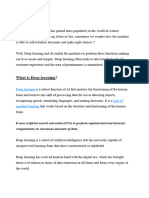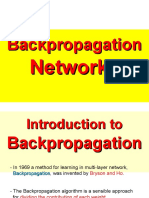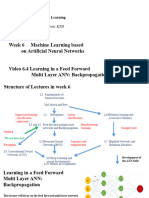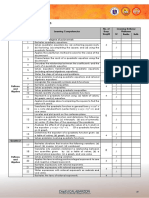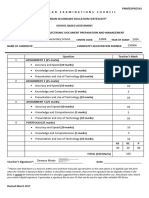0% found this document useful (0 votes)
39 views20 pagesModule 02
Module 02 introduces key concepts in deep learning, focusing on Feedforward Neural Networks (FNNs) and their architectures, including Single-Layer Perceptrons and Multi-Layer Perceptrons. It covers essential components such as forward and backward propagation, the importance of backpropagation for efficient weight updates, and challenges like convergence and local minima in optimization. Additionally, it discusses various optimization algorithms, including Gradient Descent and its advanced variants, along with real-world applications of these techniques.
Uploaded by
yoxisam356Copyright
© © All Rights Reserved
We take content rights seriously. If you suspect this is your content, claim it here.
Available Formats
Download as PDF, TXT or read online on Scribd
0% found this document useful (0 votes)
39 views20 pagesModule 02
Module 02 introduces key concepts in deep learning, focusing on Feedforward Neural Networks (FNNs) and their architectures, including Single-Layer Perceptrons and Multi-Layer Perceptrons. It covers essential components such as forward and backward propagation, the importance of backpropagation for efficient weight updates, and challenges like convergence and local minima in optimization. Additionally, it discusses various optimization algorithms, including Gradient Descent and its advanced variants, along with real-world applications of these techniques.
Uploaded by
yoxisam356Copyright
© © All Rights Reserved
We take content rights seriously. If you suspect this is your content, claim it here.
Available Formats
Download as PDF, TXT or read online on Scribd
/ 20













